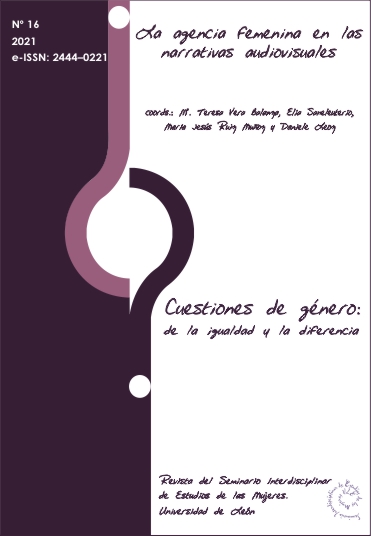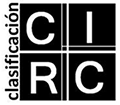Other gazes, other madness. A filmic discourse analysis of the mad woman
DOI:
https://doi.org/10.18002/cg.v0i16.6942Keywords:
mental health, gender roles, fim analysis, psychiatry, madness, agendy, visual speechAbstract
The article addresses the articulation of two categories strongly marked by unequal power relations: madness and women within filmic discourse. Historically, cinema has dealt with this intersectional character through gender stereotypes associated with madness. Through the assumption of reductionism fostered by the psychiatric biomedical model, by which every psychic suffering is capable of being interpreted in exclusively biomedical terms, such representations have functioned as pathologizing documents. Against this trend, the present study offers a narrative analysis of two audiovisual proposals which, by incorporating the social dimension of women’s psychic suffering, illuminate possible social transformations generally overshadowed by medical language and its therapeutic practices.
Downloads
Métricas alternativas
References
Amann, Klaus y Knorr-Cetina, Karin (1988): “The fixation of (visual) evidence”. En: Human Studies, vol. 11, nº. 2/3, pp. 133-169.
Aumont, Jacques y Marie, Michel (1990): Análisis del film. Barcelona: Paidós.
Bordo, Susan (1995): Unbearable weight, feminism, western culture, and the body. Berkeley: University of California Press.
Busfield, Joan (1996): Men, women and madness. Basingstoke: Macmillan.
Buxó, María Jesús (1999): “…que mil palabras”. En: María Jesús Buxó y Jesús M- de Miguel (eds.): De la investigación audiovisual. Fotografía, cine, video, televisión. Barcelona: Proyecto A Ediciones, pp. 1-22.
Canguilhem, Georges (1991): The normal and the pathological. Nueva York: Zone Books.
Carter, Rowena (2015): “How to stop making a crisis out of a drama: towards better portrayal of mental ill health in television and film”. En: BMJ, vol. 350, nº. 2307.
Casetti, Francesco y di Chio, Federico (1991): Cómo analizar un film. Barcelona: Paidós.
Cavell, Stanley (2006): “The world viewed”. En: Noël Carrol y Jinhee Choi (eds.): Philosophy of film and motion pictures: an anthology. Cambridge: Blackwell Publishing, pp. 67-78.
Cohen, Anne (2020): “Alison Brie explains the true story behind Netflix’s trippy Horse Girl”. En: Refinery29, 7 de Febrero. Disponible en: https://www.refinery29.com/en-us/2020/02/9366702/horse-girl-alison-brie-family-mental-health-true-story [22/11/2020].
Correa-Urquiza, Martín y Pié, Asun (2015): Las respuestas clínicas y sociales a la cuestión de la salud mental. Barcelona: UOC Publishing.
Correa-Urquiza, Martín (2016): “La locura como tejido habitable”. En: Serena Brigidi (coord.): Cultura, salud, cine y televisión. Tarragona: Universitat Rovira i Virgili Publicacions, pp. 209-224.
Corrochano, Elena (2012): Teoría feminista y antropología: Claves analíticas. Madrid: Editorial Centro de Estudios Ramón Areces.
Cross, Simon (2004): “Visualizing madness. Mental illness and public representation”. En: Television and New Media, vol. 5, nº. 3, pp. 197-216.
Chesler, Phyllis ([1972] 2005): Mujeres y locura. Madrid: Continta me tienes.
Dale, Jenny et al. (2014): “Student filmmakers’ attitudes towards mental illness and its cinematic representation – an evaluation of a training intervention for film students”. En: Journal of Mental Health, vol. 23, nº. 1, pp. 4-8.
Daston, Lorraine y Galison, Peter (2007): Objectivity. Nueva York: Zone Books.
Economou, Vassilis (2017): “Ana Urushadze: directora”. En: Cineuropa, 9 de Agosto. Disponible en: https://cineuropa.org/es/interview/332826/ [20/08/2020].
Esteban, Mari Luz (2006): “El estudio de la salud y el género: las ventajas de un enfoque antropológico y feminista”. En: Salud Colectiva, vol. 2, nº. 1, pp. 9-19. Disponible en: http://revistas.unla.edu.ar/saludcolectiva/article/view/52 [14/11/2020].
Fernández, Sandra (2012): “Muertas en vida. Investigación sobre la represión dada a las mujeres en la postguerra española en Ciudad Real”. En: AIBR. Revista de Antropología Iberoamericana, vol. 7, nº. 3, pp. 327-360. Disponible en: https://www.aibr.org/antropologia/netesp/0703.php [14/11/2020].
Foucault, Michel ([1975] 2002): Vigilar y castigar. Nacimiento de la prisión. Buenos Aires: Siglo XXI.
Foucault, Michel ([1976] 2007): Historia de la sexualidad I. La voluntad de saber. Buenos Aires: Siglo XXI.
Foucault, Michel ([1972] 2014): Historia de la locura en la época clásica I. México D.F.: FCE.
García Dauder, Dau y Guzmán Martínez, Grecia (2019): “Locura y feminismo: viajes de sujeción y resistencia”. En: e-Átopos, vol. 6, nº. 1, pp. 57-82. Disponible en: http://www.atopos.es/index.php/2-revista/325-atopos-20 [14/11/2020].
Gilman, Sander (1982): Seeing the insane. A visual and cultural history of our attitudes toward the mentally ill. Brattleboro: Echo Point Books & Media.
Gilman, Sander (1988): Disease and representation: Images of illness from madness to AIDS. Ithaca: Cornell University Press.
Handler, Rachel (2020): “Alison Brie based Horse Girl on her own mental health history”. En: Vulture, 7 de Febrero. Disponible en: https://www.vulture.com/2020/02/alison-brie-based-horse-girl-on-her-mental-health-history.html [14/11/2020].
Harrington, Anne (2019): Mind fixers. Psychiatry’s troubled search for the biology of mental illness. Nueva York y Londres: W. W. Norton & Company.
Horwitz, Allan (2003): Creating mental illness. Chicago: Chicago University Press.
Huertas, Rafael (2003): “Cuerpo visto & cuerpo sentido: de la anatomía a la clínica”. En: Revista de la Asociación Española de Neuropsiquiatría, vol. 88, pp. 111-126. Disponible en: https://www.revistaaen.es/index.php/aen/article/view/15862 [14/11/2020].
Huertas, Rafael (2008): Los laboratorios de la norma. Medicina y regulación social en el estado liberal. Barcelona: Ediciones Octaedro/ CSIC.
Jenks, Chris (1995): “The centrality of the eye in the Western culture”. En: Chris Jenks (ed.): Visual culture. Londres: Routledge, pp. 1-12.
Jorm, Anthony (2000): “Mental health literacy”. En: British Journal of Psychiatry, vol. 177, nº. 5, pp. 396-401.
Little, William (2009): “Mental health stereotypes in the movies crueller than ever, new report claims”. En: Time to Change, 17 de Agosto. Disponible en: https://www.time-to-change.org.uk/news/mental-health-stereotypes-movies-crueler-ever-new-report-claims/ [12/11/2017].
Martínez-Hernáez, Ángel (2018): Síntomas y pequeños mundos. Un ensayo antropológico sobre el saber psiquiátrico y las aflicciones humanas. Barcelona: Anthropos.
Meyer, Michaela, Fallah, Amy y Wood, Megan (2011): “Gender, media, and madness: Reading a rhetoric of women in crisis through Foucauldian theory”. En: The Review of Communication, vol. 11, nº. 3, pp. 216-228.
Molloy, Tim (2020): “Horse Girl ending explained by its writers, Alison Brie and Jeff Baena”. En: Moviemaker, 28 de Febrero. Disponible en: https://www.moviemaker.com/horse-girl-ending-discussed-by-its-writers-alison-brie-and-jeff-baena/ [02/12/2020].
Owen, Patricia (2007); “Dispelling myths about schizophrenia using film”. En: Journal of Applied Social Psychology, vol. 37, nº. 1, pp. 60-75.
Pié, Asun (2009): “Imágenes de la discapacidad”. En: Revista d’Intervenció Socioeducativa, nº. 42, pp. 93-103.
Read, John y Haslam, Nick (2006): “La opinion pública dice: pasan cosas malas que pueden hacer que perdamos el juicio”. En John Read, Loren Mosher y Richard Bentall (eds.): Modelos de locura. Barcelona: Herder, pp. 165-179.
Rosenberg, Charles (2002): “The tyranny of diagnosis: Specific entities and individual experience”. En: The Milbank Quarterly, vol. 80, nº. 2, pp. 237-260. Disponible en: https://www.ncbi.nlm.nih.gov/pmc/articles/PMC2690110/ [14/11/2020].
Rosentock, Jason (2003): “Beyond a Beautiful Mind: Film choices for teaching schizophrenia”. En: Academic Psychiatry, vol. 27, nº. 2, pp. 117-122.
Schiebinger, Londa (1986): “Skeletons in the closet: The first illustrations of the female skeleton in Eighteenth-Century anatomy”. En: Representations, vol. 14, nº. 1, pp. 42-82.
Scull, Andrew, MacKenzie, Charlotte y Herevey, Nicholas (1996): Masters of Bedlam: the transformation of the Mad-Doctoring trade. Princeton: Princeton University Press.
Showalter, Elaine (1987): The female malady: Women, madness and English culture, 1830-1980. Londres: Virago.
Simon, Bennett (1978): Mind and madness in Ancient Greece: The classical roots of modern psychiatry. Ithaca: Cornell University Press.
Stafford, Barbara M. (1991): Body criticism: imaging the unseen in Enlightenment art and science. Londres: MIT Press.
Tuana, Nancy (2004): “Coming to understand: Orgasm and the epistemology of ignorance”. En: Hypatia, vol. 19, nº. 1, pp. 194-232.
Ussher, Jane (1991): Women’s madness. Amherst: The University of Massachusetts Press.
Ussher, Jane (2011): The madness of women: Myth and experience. Hove: Routledge.
Vivarelli, Nick (2017): “Ana Urushadze on Georgia’s foreign Oscar candidate Scary Mother”. En: Variety, 26 de Octubre. Disponible en: https://variety.com/2017/film/festivals/ana-urushadze-georgia-oscar-candidate-scary-mother-1202599754/ [09/09/2020].
Wahl, Otto F. (2003): “News media portrayal of mental illness. Implications for Public Policy”. En: American Behavioral Scientist, vol. 46, nº. 12, pp. 1594-1600.
Walter, Garry, McDonald, Andrew, Rey, Joseph y Rosen, Alan (2002): “Medical student knowledge and attitutes regarding ECT prior to and after viewing ECT scenes from movies”. En: The Journal of ECT, vol. 18, nº. 1, pp. 43-46.
FILMOGRAFÍA
Baena, Jeff, Brie, Alison, Carithers, Alana, Eslyn, Mel (productores), Baena, Jeff (director) (2020), Horse Girl [Netflix]. EE.UU.: Duplass Brothers Productions.
Brooks, James y Johnson, Bridget (productores), Brooks, James (director) (1997), Mejor ... Imposible [cinta cinematográfica]. EE.UU.: TriStar Pictures, Gracie FIlms.
Cleitman, Rene (productor), Cassavetes, Nick (director) (1997), Atrapada entre dos hombres [cinta cinematográfica]. EE.UU.: Miramax.
Douglas, Michael y Zaentz, Saul (productores), Forman, Milos (director) (1975), Alguien voló sobre el nido del cuco [cinta cinematográfica]. EE.UU.: United Artists, Fantasy Film.
Greenfield, Debra y Greisman, Alan (productores), Figgis, Mike (director) (1993), Mr. Jones [cinta cinematográfica]. EE.UU.: TriStar Pictures.
Kajrishvili, Tinatin y Khalvashi, Lasha (productores), Urushadze, Ana (directora) (2017), Scary Mother [cinta cinematográfica]. Estonia: Artizm.
Konrad, Cathy (productora), Mangold, James (director) (1999), Inocencia interrumpida [cinta cinematográfica]. EE.UU.: Columbia Pictures.
Mangon, David (productor), Bird, Antonia (directora) (1995), Amor loco [cinta cinematográfica]. EE.UU.: Touchstone Pictures.
Shaw, Sam (productor), Cassavetes, John (director) (1974), Una mujer bajo la influencia [cinta cinematográfica]. EE.UU.: Faces International.
Ufland, Harry, Ufland, Mary Jane, Pfeffer, Rachel (productores), Stockwell, John (director) (2001), Amor loco/ Amor prohibido [cinta cinematográfica]. EE.UU.: Touchstone Pictures.
White, Timothy y Shteinman, Jonathan (productores), Rymer, Michael (director) (1995), Angel baby [cinta cinematográfica]. Australia: Astral Films.
Downloads
Published
How to Cite
Issue
Section
License
Copyright (c) 2021 Francisco Sánchez Valle

This work is licensed under a Creative Commons Attribution-NonCommercial-ShareAlike 4.0 International License.
L@s autores/as que publican en esta revista están de acuerdo con los siguientes términos:
1. L@s autores/as ceden de forma no exclusiva los derechos de explotación (reproducción, distribución, comunicación pública, transformación) a la Universidad de León, por lo que pueden establecer, por separado, acuerdos adicionales para la distribución no exclusiva de la versión de la obra publicada en la revista (por ejemplo, alojarlo en un repositorio institucional o publicarlo en un libro), con un reconocimiento de su publicación inicial en esta revista.
2. Este trabajo se encuentra bajo la Creative Commons Attribution-NonCommercial-ShareAlike 4.0 International License. Puede consultarse desde aquí la versión informativa y el texto legal de la licencia.
3. Se permite y se anima a l@s autores/as a difundir electrónicamente las versiones pre-print (versión antes de ser evaluada) y/o post-print (versión evaluada y aceptada para su publicación) de sus obras antes de su publicación, ya que favorece su circulación y difusión más temprana y con ello un posible aumento en su citación y alcance entre la comunidad académica.
Cuestiones de Género utiliza exclusivamente la licencia Atribución-NoComercial-CompartirIgual 4.0 Internacional (CC BY- NC-SA 4.0).
Bajo los siguientes términos:
- Atribución: Usted debe dar crédito de manera adecuada , brindar un enlace a la licencia, e indicar si se han realizado cambios . Puede hacerlo en cualquier forma razonable, pero no de forma tal que sugiera que usted o su uso tienen el apoyo de la licenciante.
- No Comercial: Usted no puede hacer uso del material con propósitos comerciales .
- Compartir Igual: Si remezcla, transforma o crea a partir del material, debe distribuir su contribución bajo la la misma licencia del original. cualquier uso permitido por la licencia.
No hay restricciones adicionales — No puede aplicar términos legales ni medidas tecnológicas que restrinjan legalmente a otras a hacer
L@s autores/as pueden consultar los derechos de copyright y las condiciones de autoarchivo en el directorio Dulcinea.










